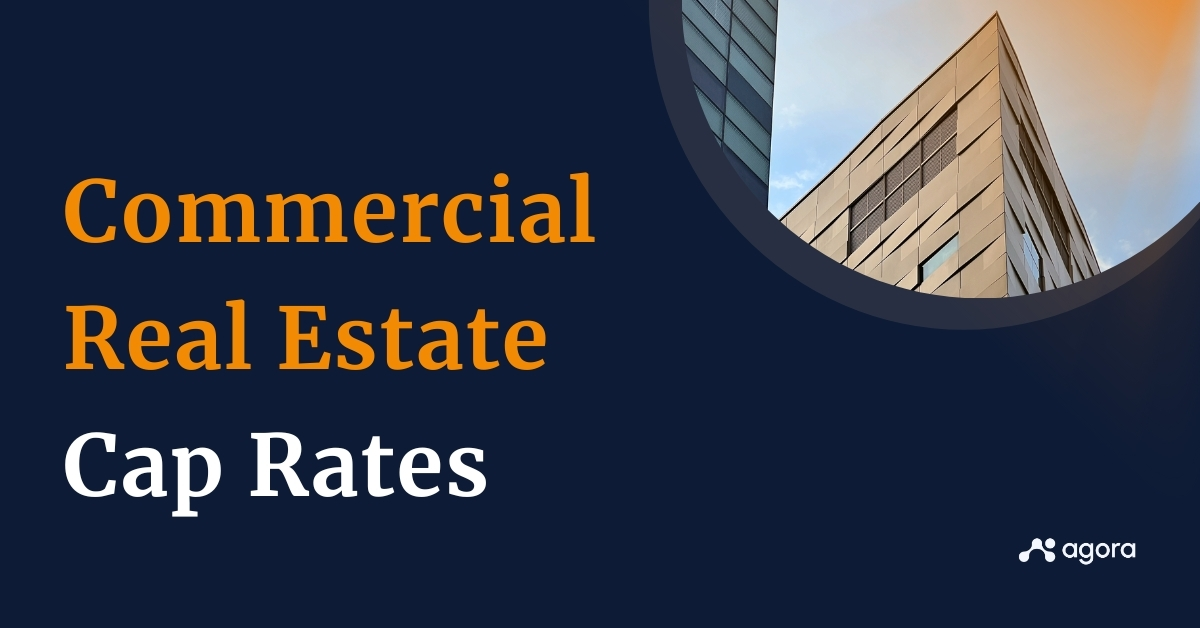The capitalization rate, commonly referred to as the cap rate, is used by real estate investors to evaluate the return that an investment property can be expected to provide. It is important to remember that this metric tells you the annual percentage yield of a real estate investment that is made in cash (and not with borrowed funds).
What is a cap rate?
Think of a cap rate as a number to help estimate the potential return on a commercial real estate investment. This metric is commonly used when analyzing commercial real estate to assess if it is investment-worthy.
When calculating the cap rate, a commercial property’s annual net operating income is divided by its market value. For example, consider a property with a market value of $800,000 and a net operating income of $80,000. The cap rate of this property would be 10%. In effect, an investor would earn a rate of return of 10% on the property’s current market value.
There are two other pieces of information that cap rates provide. Firstly, investors can estimate how long it will take for the property they have purchased to pay for itself. A rate of 10% implies a payback period of ten years. This point can be explained with the example provided earlier.
A property with a market value of $800,000 and a net operating income of $80,000 has a cap rate of 10%. With this income level, it would take the property 10 years to pay for itself.
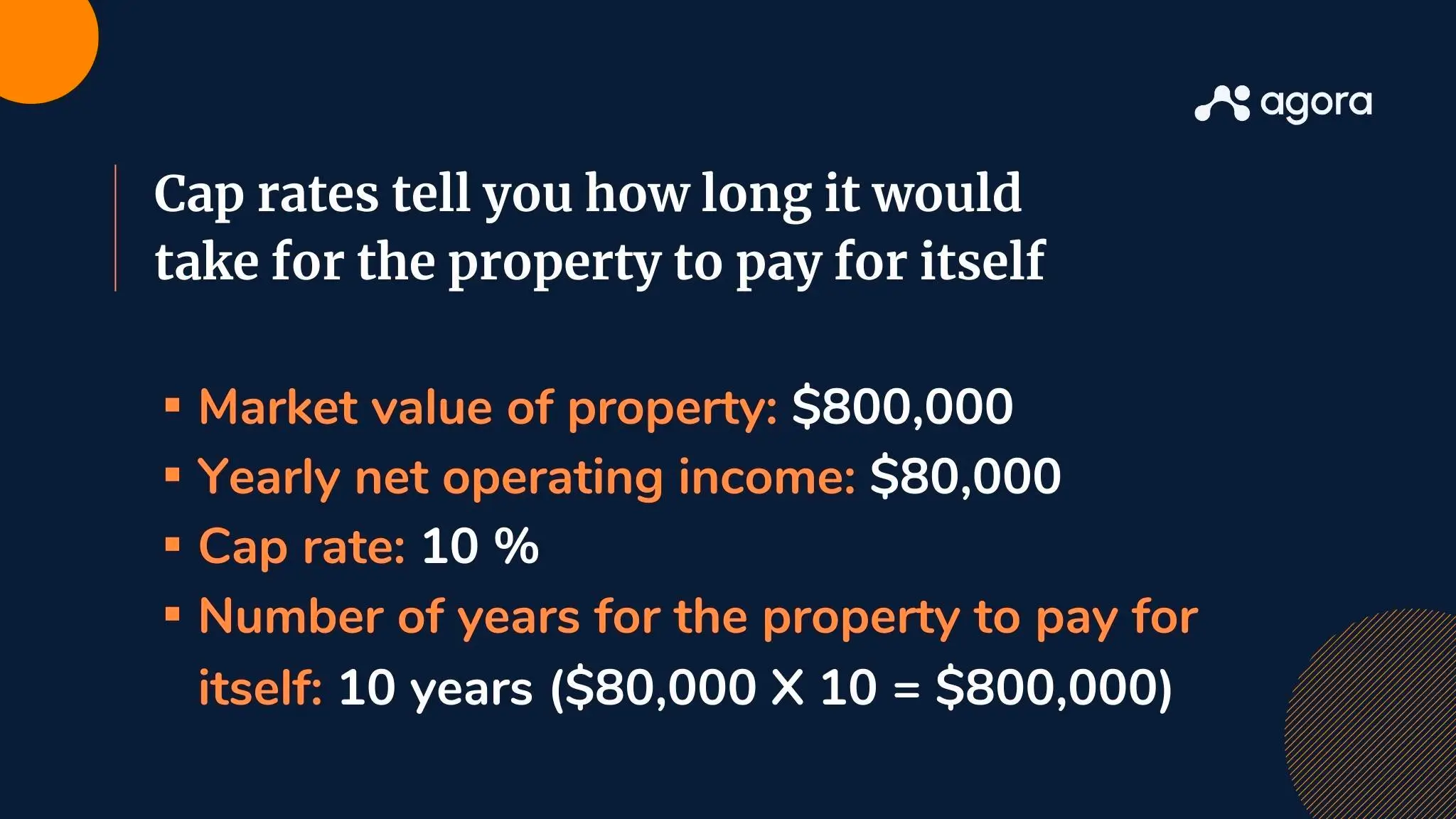
Secondly, it is a good indicator of the property’s risk profile. As a general rule, higher cap rates point to a riskier investment, while lower ones signal a lower level of risk. For example, if you purchase an investment property with a high cap rate of 20%, you are likely exposing yourself to a greater degree of risk. Remember that there is no getting away from the risk-return paradigm.
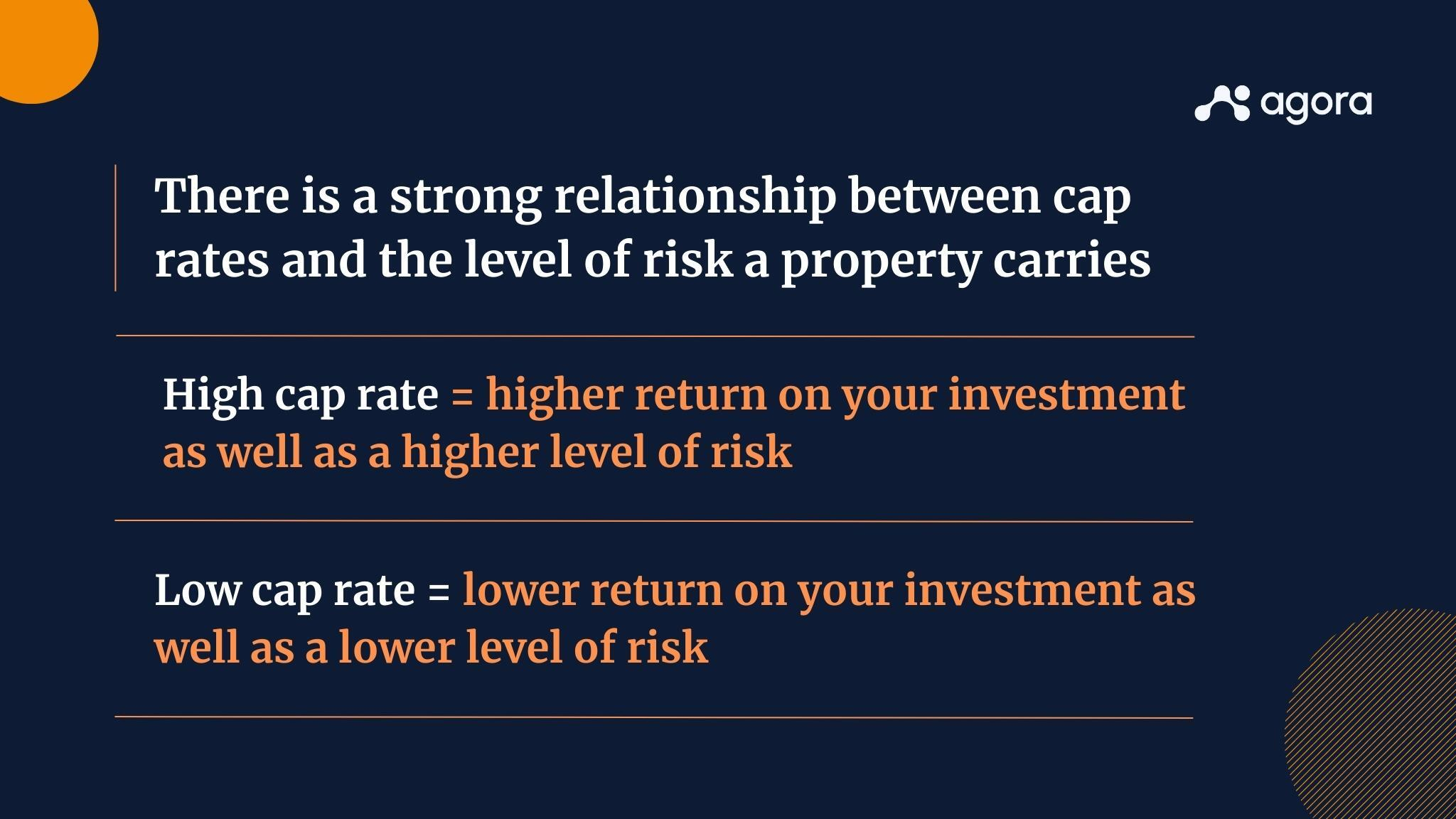
Importance of cap rates in commercial real estate
Cap rates provide investors with a tool to compare the potential of different properties. While it is not a perfect metric, it conveys two essential attributes – the return investors can earn, and the level of risk they are exposed to.
Let us take a moment to discuss how this metric tells you about a property’s risk profile. Consider two properties, one with a high cap rate of 15% and another with a much lower rate of 3%. Likely, the high cap rate property will not appreciate significantly over time. However, you can expect a far greater degree of capital appreciation in the property asset value of the one with the lower rate.
How are the cap rate and net operating income calculated?
The cap rate of a commercial real estate investment can be represented by the following formula:
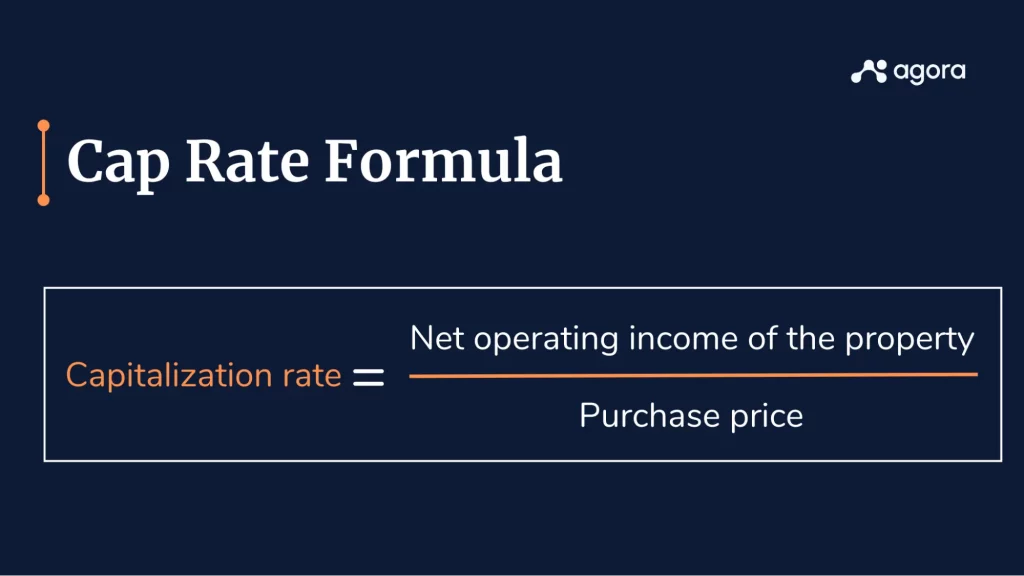
When using this metric to evaluate commercial real estate investments, keep the following in mind:
- It is expressed as a percentage.
- It represents the annual yield of the investment property.
- Net operating income is obtained by reducing expenses from the property’s rental income. If the property generates any other income besides rental income that must also be considered.
- The expenses include property taxes, management fees, insurance, and repairs and maintenance. Capital expenditure is not to be deducted from the net operating income. Neither are interest and taxes. Keep in mind that if you are using a source like a commercial equity line of credit to finance your property purchase, you cannot use cap rates to assess the returns of the transaction.
Factors affecting cap rates in commercial real estate
The cap rate of a property is calculated by dividing annual net operating income by the property’s current market value. The same property could have a different cap rate if its income varies. The rate could also change if the property’s value increases or decreases, even if the rental income and ancillary incomes remain constant.
The following table will illustrate this point:
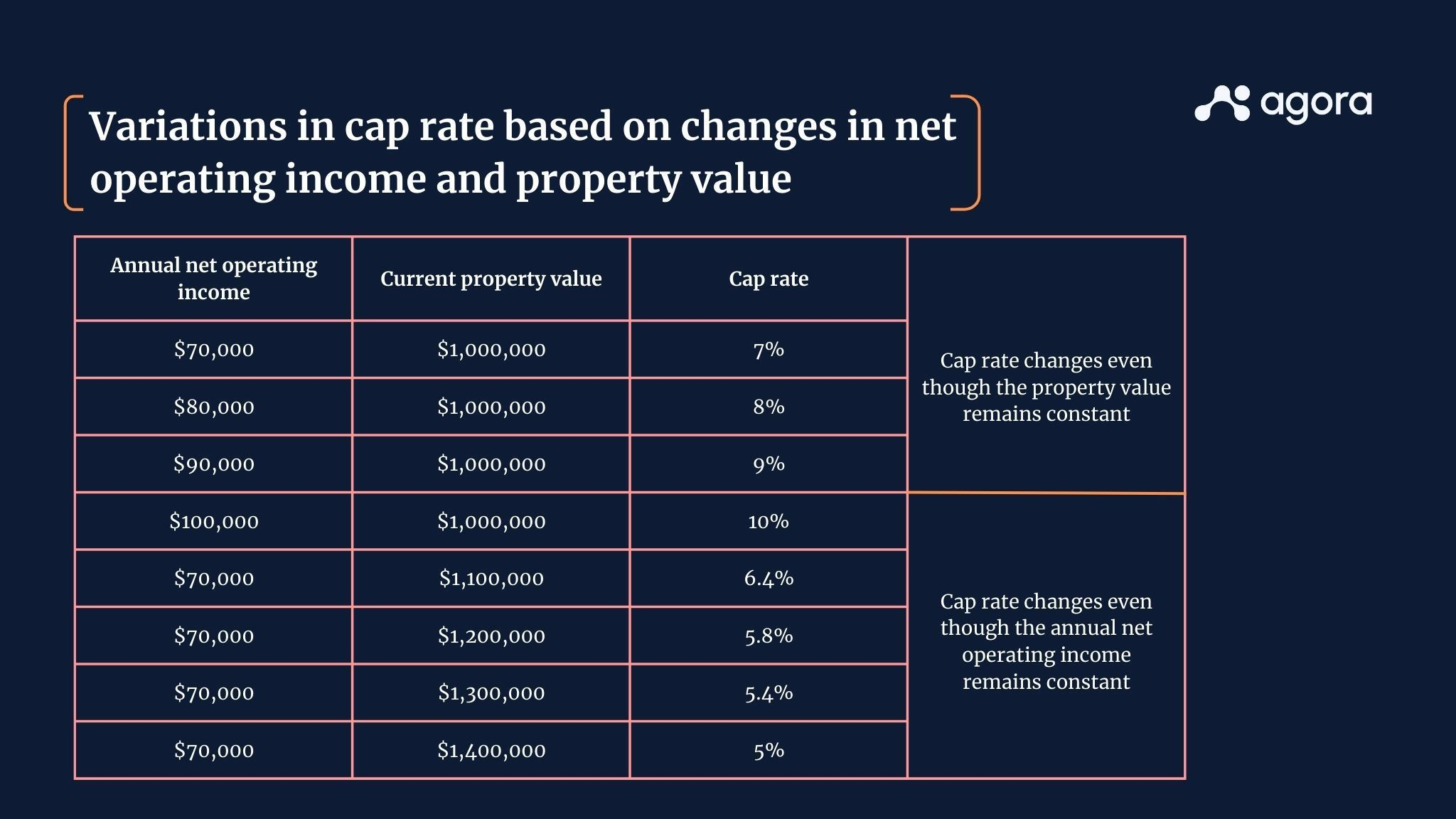
To understand how cap rates work, it is vital to conduct the commercial real estate due diligence exercise carefully. Here is a list of factors that affect cap rates and which would also form part of the due diligence that is carried out prior to the purchase of a property:
Location
A property in a prime area would have a higher market value than one in an inferior neighborhood. The upmarket property would likely have a lower cap rate as well as a lower risk profile.
Market conditions
An overheated property market with high valuations will likely lead to lower cap rates. When property prices decline, cap rates may climb to higher levels.
Rate and duration of leases
The property could be considered high-risk if the existing lease expires soon. Consequently, you could have a high cap rate. Conversely, a long-term lease at market rates could lower the cap rate.
Timing of the acquisition
You should remember that a cap rate is a ratio at a particular point in time. As a result, it may not hold true in the immediate future. That is because investors may need to incur higher operating costs in subsequent years. Additionally, the market value of the property could increase or decrease over time. Both these changes would affect the cap rate.
Consider a situation where a property with a low cap rate with a primary tenant paying below-market rent on a lease that will expire shortly. Even though the cap rate is low, there is an excellent chance that the new lease would be at a significantly higher rent and lead to an increase in the cap rate.
Credit scores
A property with tenants who have high credit scores carries a lower level of risk. The landlord is likely to see a lower level of rental default. This will lead to a lower cap rate.
Replacement cost
What is the property’s market value being considered in the cap rate calculation? Expect the cap rate to be high if it exceeds the replacement cost. This is because an investor could build a new property at a lower cost.
Property condition, type, and class
Class A properties and those in good condition are considered lower-risk; hence, expect a lower cap rate.
What is considered to be a good cap rate for commercial real estate?
There is no single correct answer to this question. What one investor considers to be a good rate may not work for another at all.
The first step you need to take is to think about the kind of investment that will meet your needs. Do you want high cash flows, or is it capital appreciation you are looking for? If it is the former, a property with a high cap rate is your best bet. A lower cap rate is preferable if you have set your sights on making capital gains.
Of course, you must remember that the cap rate is only indicative; it is not a magic number that tells you whether a property is a good investment. Your final decision needs to take several other factors into account as well.
Advantages of selling your commercial real estate property based on cap rates
Using the cap rate to help you make a decision when selling your property has several advantages:
- You can compare the cap rate you are selling at to the cap rates of other similar properties.
- If you cannot find a property to compare yours with, you can adjust the cap rate to account for this.
- Remember that cap rates work best for properties with long-term leases. You can use it to give the potential buyer an idea of the return that the property can provide.
How to use commercial real estate cap rates to make investment decisions
The cap rate is an invaluable tool for property investors. It can make the decision-making process more straightforward and help compare different purchase options. One vitally important piece of information that the cap rate conveys is that it tells you the number of years for the property to pay for itself.
The following table will help clarify this point:
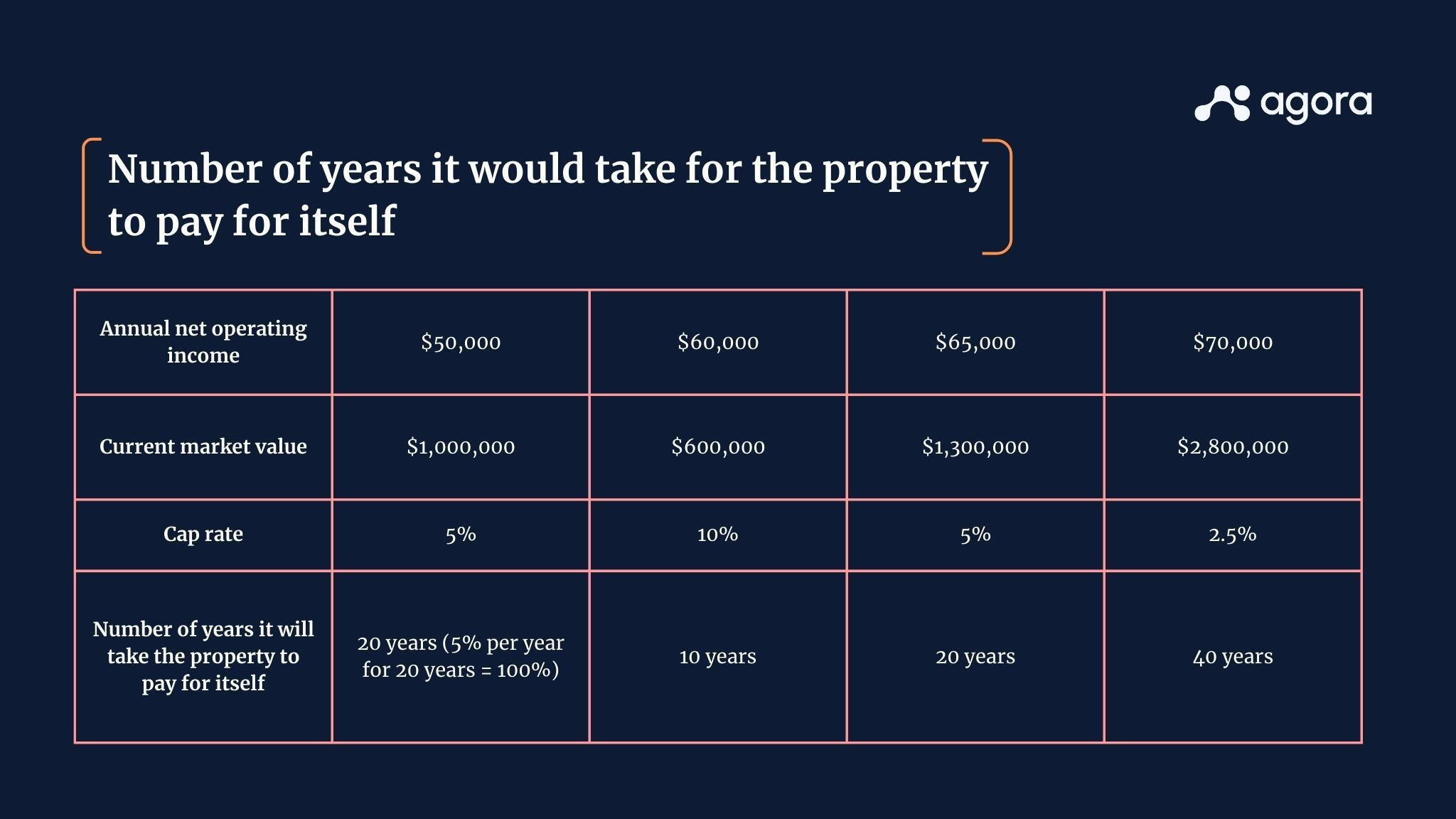
The cap rate can also provide investors with several other inputs:
Analyzing the cost of pipeline acquisitions
Keeping a tab on the cap rates of different properties in your pipeline can give you a snapshot of your options and help you decide on your next purchase.
Evaluating the benefits of refinancing existing assets
Cap rates give you an idea of a property’s value and the returns you are making. This information can be beneficial if you are considering refinancing.
Projecting sale value with terminal cap rates
The terminal cap rate is calculated by dividing the projected net operating income by the expected sale price of the property. If the terminal cap rate is lower than the going-in cap rate (the cap rate based on the first-year net operating income and purchase price), the sale of the property will result in a profit.
Evaluating cap rate vs. ROI
You must keep in mind that the cap rate and ROI are not the same. The former is the return based on the property’s value, while the latter is the return calculated on the cash investment.
The bottom line
Consider the cap rate an excellent starting point for property investment decisions. It is a first-class metric for comparing different real estate purchase options. You can also use it as a risk measurement tool. However, remember that the cap rate is not a number set in stone. It is subject to change, and investors should understand the factors that influence this metric before making an investment decision.



